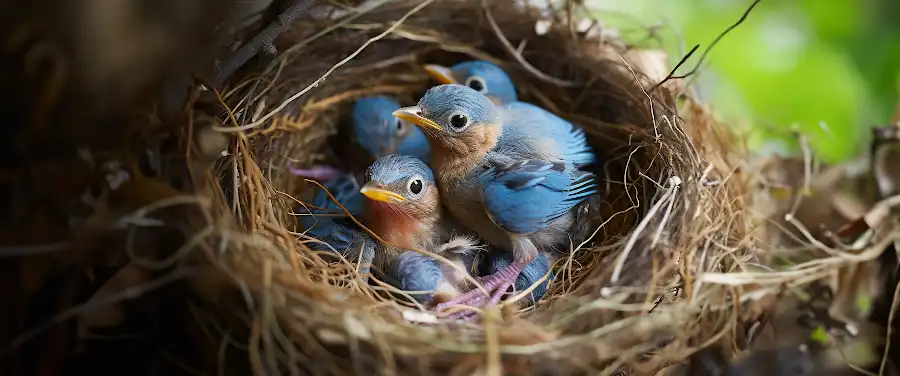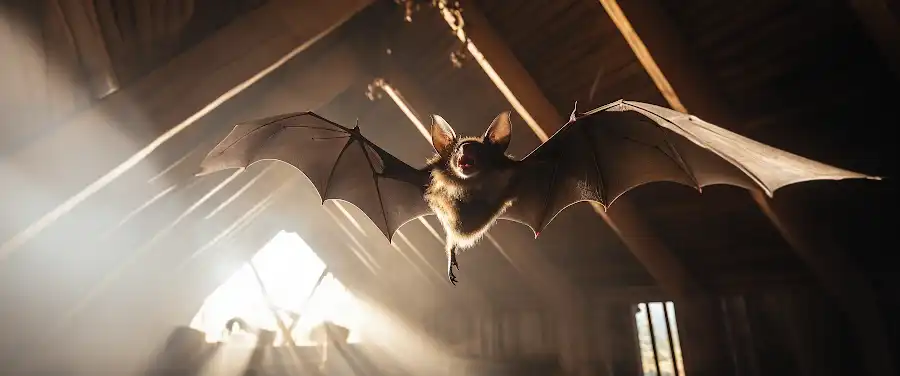
Birds are oftentimes elusive creatures, their actions full of intriguing mysteries that pique our innate curiosity and wonder. How amazing they go about their day, performing unique, significant activities which contribute starkly to nature’s charm. An integral part of such charm lies in deciphering the enigma of their behaviors and nests. Fascinating, isn’t it? That’s the remarkable world of bird behaviors and bird nesting habits.
Have you ever paused to consider why certain birds flock together or why others prefer solitude? Or the reason behind the diverse architecture of bird nests – some with prominent intricate detail, others opting for a minimalist aesthetic? These patterns and routines are key tenets of avian behaviors. Their habitats are their canvases, their nests their masterpieces and their behaviors, activities, and impulses creating beautiful symphony in nature’s orchestra. Invaluable insights are gained when we delve into the very fabric of their existence, offering us a better understanding of our feathered friends and enriching our ecological knowledge.
Understanding bird behavior and nesting habits isn’t an ornithologist’s sole privilege. It is a treasure trove open for anyone keen enough to explore. By gaining more knowledge in this field, we can conscientiously contribute to their ecological wellbeing while enhancing our nature experiences. The allure of birdwatching becomes more compelling as you unlock the esoteric habits and secrets of these captivating creatures in their natural habitats. With each observation, each new revelation, we’re given a ticket into the grand theater of the skies, revealing an understanding of bird habitats like never before. Isn’t that something to turn the mind toward, an exceptional point of interest to dive into before we navigate the factors influencing bird behavior?
What Are Some Common Bird Behaviors?

Bird watching is a popular hobby because there’s so much to discover in their fascinating world. From the mating rituals to their intricate migration patterns, birds are creatures of habit and instinct. Glimpses into these behaviors provide us with a clearer understanding of the natural order of our world.
Birds, like humans, have certain patterns and rituals they follow, with each species having unique behaviors. During the mating season, birds utilize various kinds of displays to attract their mates; some birds sing melodiously while others show off their vibrant plumage. According to a study by Cornell University, the appearance and sound quality of a bird’s mating rituals can determine its reproductive success.
Bird migration, another common behavior, is driven by a range of factors including the availability of food, the change of seasons, and reproduction. Some birds, like the Arctic tern, travel over 25,000 miles during migration, according to National Geographic.
Beyond their cyclic migrations, birds have complex daily routines. Key among them is their foraging methods for finding food. They either swoop down to catch prey or patiently wait for it to appear. Bird communication, which is another feature of their behavior, consists of distinctive calls or songs, body language, and flight patterns.
Grooming habits in birds aren’t just about looking good. These methods also contribute to general health, removing parasites and helping feathers stay in top condition. Bird defensiveness, or aggressive behaviors, are also important for these avian friends. Most birds are territorial creatures; they’ll fight off invaders to protect their young ones and nests.
How do Birds Communicate?
Birds have a rich language of vocal signals and physical cues. Their calls can range from simple tweets to complex songs depending on the message they want to convey. For instance, songbirds like robins or sparrows have distinct melodies that act both as an attraction for potential mates and as a signal to deter intruders.
On the other hand, some birds rely on body language for communication. Crest position, head bobbing, and bill snapping can reveal different moods or intentions. Flight signaling is another bird language where different flight patterns and heights are used to send specific messages.
What are Some Unique Bird Behaviors?
Unique avian habits can be seen in different species of birds. Researchers have found instances where birds show remarkable behaviors, such as tool usage and cooperation. For instance, crows have been known to use sticks to extract insects inside tree barks — innate intelligent behavior that’s fascinating to watch.
In conclusion, understanding bird behavior is a fascinating journey into the lives of these captivating creatures. It offers invaluable insights into their feeding, mating, and survival techniques.
Transitioning onto the next topic, we will uncover what influences a bird’s nesting habits. These habits, like many other bird behaviors, are shaped by a multitude of deciders, not dissimilar to how we humans choose our own homes. From the availability of food and shelter to the need for protection from predators, the decision on where and how to nest is based on a range of factors.
What Factors Influence a Bird’s Nesting Habits?

Have you ever stopped to watch a bird in its natural environment and noticed its peculiar behaviors, especially during nesting season? The sheer variety and complexity of bird behavior and their nesting habits can indeed baffle even the seasoned birdwatcher. Various factors influence where and how birds build their nests, reflecting the incredible adaptability and resourcefulness of these feathered species. It’s a masterstroke of nature that’s intricately intertwined with nesting environments, nest building material, nesting patterns, and species-specific nests.
One key factor that nudges birds towards a particular nesting spot is the presence or absence of dangerous predators. Birds need to ensure their nests are hidden and defendable, thereby increasing the survival chances of their offspring. Hence, they often opt for nesting environments offering ample cover and quick escape routes.
Availability of Nest Building Material
Nodes in the grand dance of survival are the materials birds use for constructing their nests. Nests must provide a safe, comfortable space for young chicks, and the available building materials greatly dictate their design. From twigs, grass, and leaves to mud, stones, and human-made debris, birds employ a range of materials reflecting their wizardry in nest construction.
Change of Seasons and Nesting Patterns
Can’t overlook the role of seasons while discussing bird behaviors and nesting habits. The dynamic of seasons affects overall bird behavior, especially their nesting patterns. For instance, spring – the time of plenty – sees a flurry of nest-building activities as most birds breed during this period.
The Role of a Bird’s Species in Nesting Behavior
No two bird species are identical, and this reflects vividly in their nesting habits. The size and type of the nests vary widely among species. For instance, an eagle’s nest, also known as an aerie, is large and sturdy. In contrast, a hummingbird’s nest is a tiny cup delicately adorned with lichen, spider’s web, and other elements that offer camouflage.
Here’s a table that further illustrates the species-specific influence on nest type and size:
| Bird Species | Nest Type | Nest Size |
|---|---|---|
| Eagle | Aerie | Large |
| Hummingbird | Cup type | Tiny |
| Sparrow | Domed with side entrance | Small |
| Weaver Bird | Suspended with bottom entrance | Medium |
Bird behaviors and nesting habits, therefore, are the result of a fascinating mix of environmental influence, survival tactics, and species-specific traits. This intertwining of factors is a testament to the incredible adaptability and finesse of our feathered friends. But it also means that each species requires particular conditions to thrive, making biodiversity and conservation efforts all the more critical.
Now that we’ve piqued your curiosity about bird behaviors and nesting habits, are you ready to dive into the bird’s world of varied nesting architectures? Transitioning smoothly, let’s explore the “What are Different Types of Bird Nests?”
Conclusion
In conclusion, the enchanting world of avian species is indeed a spectacle to behold. Their unique bird behaviors and nesting habits are intricate displays of nature’s stunning complexity, spotlighting the cognitive brilliance and adaptability of our feathered friends.
From industrious weavers meticulously crafting intricate nests to the strategic shift patterns of migrating birds, every action echoes a fascinating natural wisdom. This intimate knowledge of bird behavior not only gives us insights into their fascinating lives but also burgeons our respect for the ecological balance they contribute to, weaving significant narratives into our ecosystems.
When we delve into the lives of birds, we realize that they are no ordinary creatures. They exhibit an array of behaviors and habits that reflect a microcosm of nature’s grand design. The art of nest-building, in particular, is an awe-inspiring exhibit of avian ingenuity, a testament to the evolutionary expertise of these aviators.
Here’s a brief recap of bird behaviors we’ve explored: from feather-ruffling courtship displays, melodious songs used for communication and attracting mates, to distinctive methods of foraging for food. But remember, these are just a snapshot of the full spectrum of bird behaviors. Each species boasts its unique lifestyle intricacies; some nest in trees, others ground burrow, some prefer solitary existence while others thrive in flocks, certain species migrate, while others maintain a sedentary living year-round. Suffice to say, the bird world is rich in diversity and complexity.
However, our fascination should not obscure the importance of conservation in sustaining the intricate fabric of our ecosystems. Bird behaviors and nesting habits are not just intriguing natural phenomena. They are essential puzzle pieces that contribute to the overall ecological balance. Each bird plays a vital role—from pollinators scattering seeds, pest controllers maintaining crop health, to the migratory patterns influencing the global climate—birds leave an indelible mark on the environment.
We must acknowledge their significance in preserving biodiversity and take tangible steps towards their protection. Let us appreciate the captivating symphony of bird calls, the tranquil sight of them soaring across the horizon, and the hand of nature at work in their nest-building process. It’s time to expand our role from being mere spectators to actively participating in safeguarding their habitat.
Remember, maintaining the natural world’s health and diversity, including the world of birds, is an investment in our planet’s future. We hope you’ve enjoyed this incredible journey, learning about bird behaviors and nesting habits. Keep exploring, stay curious, and let’s make a difference, one bird at a time!
| Bird Behaviors | Associated Cost |
|---|---|
| Nest Building | Exhibit of Adaptability and Ingenuity |
| Migratory Patterns | Influencing Global Climate |
| Foraging Methods | Pest Control and Seed Dispersion |




